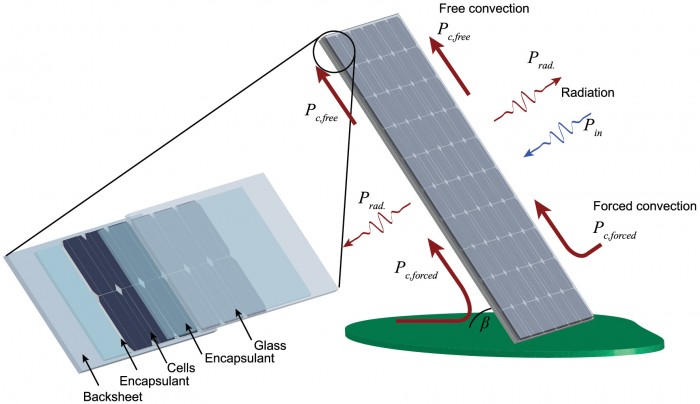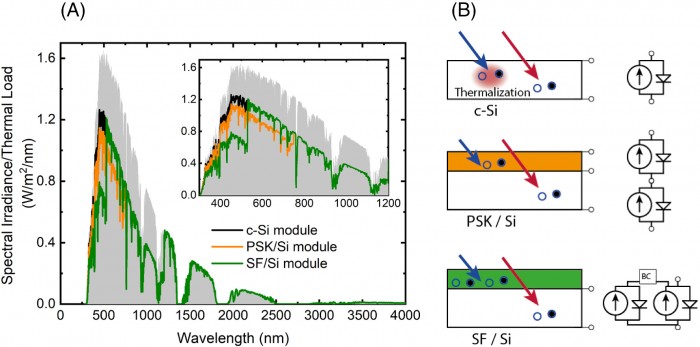
The tandem cell can be composed of new compounds such as silicon and perovskite nanocrystals. The perovskite-type nanocrystals have a larger band gap than silicon, which helps the device capture more solar spectrum for power generation. The best solution for traditional solar cells is that each photon generates an electron as a carrier of electrical energy. The singlet fission technology produces twice as many electrons as in the traditional solar cells, that is, one photon generates two electrons. There is tetracene in the equipment that realizes singlet fission, which can transfer the energy generated by singlet fission to silicon. Scientists and engineers around the world are working hard to find the best way to integrate tandem cells and singlet fission processes into commercial solar equipment to replace traditional single-junction silicon solar cells commonly found in rooftops and large-scale arrays.
This time, the researchers highlighted some key advantages of tandem cells and singlet fission. Researchers have indicated that silicon or perovskite tandem cells and singlet fission cells based on tetracene can operate at lower temperatures compared with traditional silicon devices. This will reduce the impact of heat loss on the equipment, extend the service life of the equipment, and reduce the energy cost of production of equipment. For example, a reduction in the operating temperature of the module by 5°C to 10°C is equivalent to an increase of 2% to 4% in annual power generation. It is generally found that the lifetime of the device doubles when the temperature decreases for every 10°C. This means that the service life of tandem cells has increased by 3.1 years, and that of the singlet fission cell has increased by 4.5 years.

In addition, the singlet fission cell has another advantage. When tetracene is inevitably degraded, it will become transparent to solar radiation, allowing the cell to continue to function as a traditional silicon device.
The main author of this research, Dr. Jessica Yajie said that the commercial value of the photovoltaic technology can be achieved by improving energy conversion efficiency or extending the service life. The former is the main driving force for the development of the next generation technology. People almost didn't consider the later part before, that is the advantage of the potential service life.